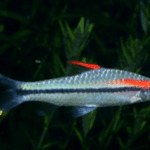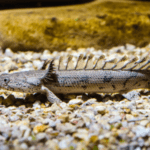Among the most visually stunning aquarium sights, synchronized schools of colorful fish never cease captivating. But maintaining numerous healthy fish demands catering setups and care towards shoaling species particular needs supporting properly sized groupings long term through their innate social structures requiring unique allowances aquarists must accommodate facilitating success.
Select Appropriate Species
Avoid mixing incompatible schoolers together or overcrowding limited volumes creating diseased environments degrading wellness.
Resemble Natural Group Sizes
Some schooling fish like neon tetras comfortable exist together limited dozen individuals, while giant danios require two dozen brethren minimum constituted properly into adequate numbers by sizes tanks allow for preventing cramping stressing weakened immune systems.
Ensure Peaceful Dispositions
Combine schooling fish sharing similar demeanors avoiding fin nipping species like tiger barbs attacking more passive choices terrorizing tanks never establishing order required for complementary coexistence crucial minimizing aggressions or interventions needed.
Provide Adequate Space
Crowding schools into too small tanks causes deteriorating conditions and contagious diseases spreading quickly.
Follow Stocking Guidelines
General inch-per-gallon overstocking guidelines help avoid cramming schools into inadequate spaces despite temptation acquiring impressive numbers initially. This prevents fatal bullying and parasite transmissions degrading entire systems.
Allow Natural Behaviors
Ensure ample horizontal swimming lanes schools require for exhibiting natural instinctive movements impossible cramped spaces force. Observe group dynamics daily ensuring healthy hierarchies and feeding behaviors establish within properly sized environments given.
Perform System Maintenance
While schooling fish produce increased waste loads, staying vigilant on tank husbandry prevents losses.
Test Water Weekly
Using liquid test kits tracking bio-indicators like ammonia and nitrites helps recognize deteriorating water conditions through populations expansion before health gets impacted allows reversing issues with sufficient partial water changes maintaining cleaner parameters.
Clean Mechanical Filters
While biological filtration accommodates elevated waste levels increased numbers produce through huge colonies, mechanical filtration clearing physical debris accumulations struggles without increased manual cleaning maintaining steady turnover ratios and oxygenation overall fish depend through their respiration.
Conclusion
Schooling fish captivate aquarists through stunning synchronized numbers made possible selecting appropriate shoaling species sized properly while providing adequate space facilitating natural group behaviors impossible exhibits otherwise. However intensive husbandry and close monitoring water quality remains essential ensuring ongoing health maintenance success keeping desirable schools together avoiding easily prevented disease and losses for maximum enjoyment.
FAQs About Maintaining Schooling Fish
1. How many schooling fish per gallon allowed?
General guidelines suggest allowing approximately one inch combined adult lengths schooling fish per gallon constituted supports proper hierarchies and movements. However target lower stocking densities with adjustable filtration capacities sized larger tanks allow for rather than pushing limits smaller volumes would struggle supporting.
2. Do schooling fish get lonely?
Yes, keeping singular fish unable properly school together risks stress, aggression, poor immune health and deterioration from the lack of essential group stimuli behaviors require exhibited from adequately sized colonies their particular species shown comfort keeping together naturally.





